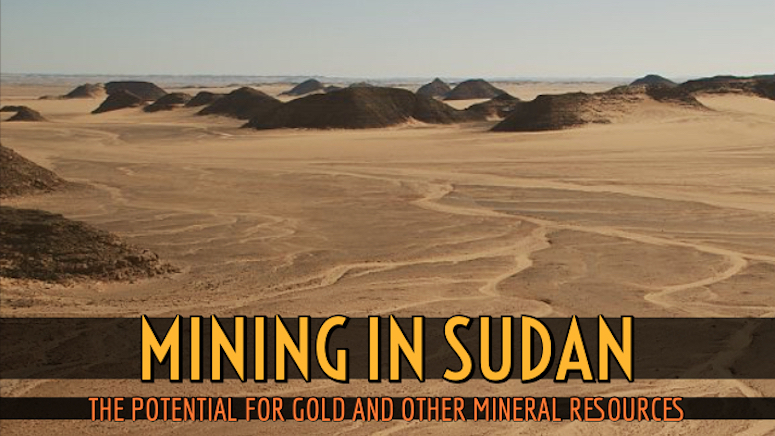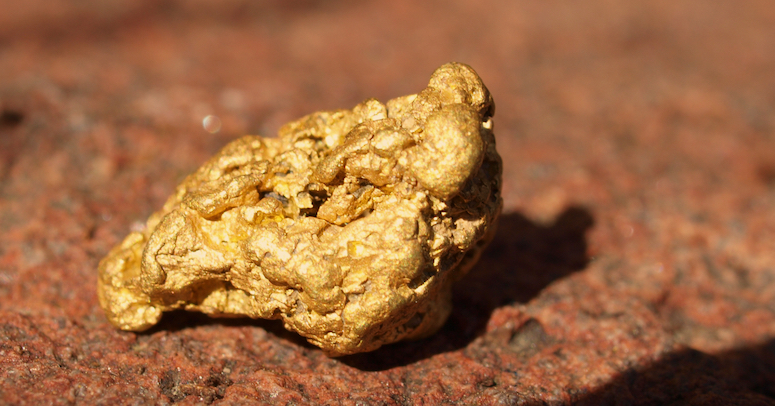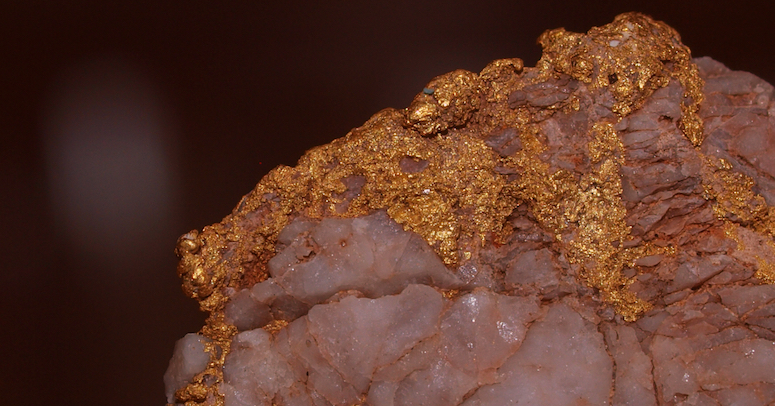
Not only is Africa the cradle of humankind, it is also one of the most resource-rich continents on our planet. Taking pride of place as the largest African country in terms of geographical area is the Sudan, located right at the crossroads between the Middle East and the Horn of Africa. Its large landmass spans almost two million square kilometers and is characterized by diverse geology.
With this diversity also comes large volumes of mineral resources, evidenced by the fact that Sudan has been one of Africa’s top gold-producing countries for years.
Gold in Sudan is found predominantly in three different types of geological formations, namely the Parentheses Gossan formation in the Eriab region of the Nuba Mountains, one of the mining districts we will discuss later in this article. Gold is also found in alluvial deposits along the Nile River, and finally in quartz vein formations across the Sudan.
Sudan’s Ministry of Minerals has identified 7 mineral districts that have good potential for mining operations. These districts and their output are outlined below.
Major Mining Districts in Sudan
In the northeast we have the Red Sea Hills, which runs parallel with the Red Sea and separates the coastal plain from the Eastern Desert. These hills rise roughly 3,000 meters high, and contain gold, copper, and iron ore, as well as silver, zinc, garnet, gypsum and talc deposits. Estimated amounts of major mineral resources in this area are 500,000 metric tons of contained copper, 150 tons of contained gold, 4,500 tons of silver and 1.9 million metric tons of contained zinc.
The Hassai Gold Mine, a partnership by the State of Sudan and Canada’s La Mancha Resources, is also located in this district. This open pit mine approximately 50 kilometers from Khartoum is the leading large-scale gold mine in all of Sudan, with production from 1992 to 2014 documented at roughly 80,000 kilos of gold. This was sourced predominantly from near-surface deposits in the upper oxidized cap rock.
Moving towards Sudan’s center, we have the Bayuda Desert, which spans roughly 100,000 square kilometers. This area contains feldspar, gold, iron ore, manganese, mica, silica and marble deposits. Gold can be found in auriferous quartz from shallow mines and wadis.
The Jebel Marra volcanic field is located in western Sudan, with the 5-kilometer wide Deriba caldera sitting at its summit. This area is home to deposits of garnet, salt, sulfur and various base metals. On the other hand, the Jebel Abyad and Jebel Wahib region in northern Wadi Hawar are noted to have gold, chromite, bauxite and platinum-group metals.
In southeastern Sudan, we have the Ingessana polymetallic complex in the Ingessana Hills in the State of Blue Nile. The mix of metamorphic and sedimentary rocks here are known to produce asbestos, chromite, gold, marble, and talc.
In southern Sudan, Southern Kordofan to be specific, lies the Nuba Mountains, also called the Nuba Hills. These mountains stretch on for about 48,000 square kilometers, but as yet has a fairly undeveloped road network. Chromium, copper, gold, iron, manganese and nickel can be found here, along with other industrial minerals and even uranium!
Finally, we have in South Darfur the Copper Pit mineral district also called the Darfur Pit, where copper, gold, precious stones and also uranium can be found. This area produces mostly copper, another mineral the country is noted for. In fact, the Al-Qutb mine in eastern Sudan is reputed to hold about five million tons of copper, the largest reserve in the world. This mine also includes about 700 thousand tons of zinc, three thousand tons of silver and 140 tons of gold.

Increases in Small-Scale Mining Licensing
The United States Geological Survey (USGS) estimates that in 2014, the Sudanese government awarded more than 350 small-scale mining licenses to encourage the industry. There are numerous large-scale companies exploring opportunities in Sudan, but also quite a significant sector of artisanal miners. It is a wonder that artisanal miners actually account for much of the country’s gold production!
Small miners will likely play a big role in the future of mining in Sudan. There is simply so much ground yet to be explored that it will take considerable efforts from a large group of prospectors to thoroughly explore this vast country. There is undoubtedly more rich precious metals yet to be discovered.
Many individual miners are using metal detectors to explore the vast deserts for gold nuggets. This video shows several Sudanese men as they recover a small nugget from the Nubian desert.
Poverty and Dangers for Gold Prospectors
However, despite its rich resources simply waiting to be mined, the Sudanese mineral industry has yet to fully develop and be properly explored. As the country has been roiled by political turmoil, famine, water crises and internal conflict, developments in this area have yet to be realized. There are still huge areas with limited roads, and no infrastructure to allow for extended prospecting ventures.
With the war that erupted in 2013 displacing many Sudanese and forcing them to flee their homes, the water crisis and the recent famine in 2017, there are many areas which still need stabilization. Even for large mining companies, a stable and (at least somewhat) safe area is needed to properly develop a mining property.
Individual miners will continue to work hard to dig a few tiny flecks of gold from the ground. In one of the poorest countries on Earth, the allure of gold is very strong. Just as it has always been, there will be men looking to make their furtune from this yellow metal. Very few will, but many will try.
Prospectors who wish to explore the Sudan should be well apprised of the situation and further research each area prior to journeying there. This is not somewhere for the faint of heart. A non-native should not expect to travel here and mine the land without an understanding of what is going on in the country as a whole. This is a dangerous place for outsiders.
Next: 9 African Countries with the Richest Gold Mines

